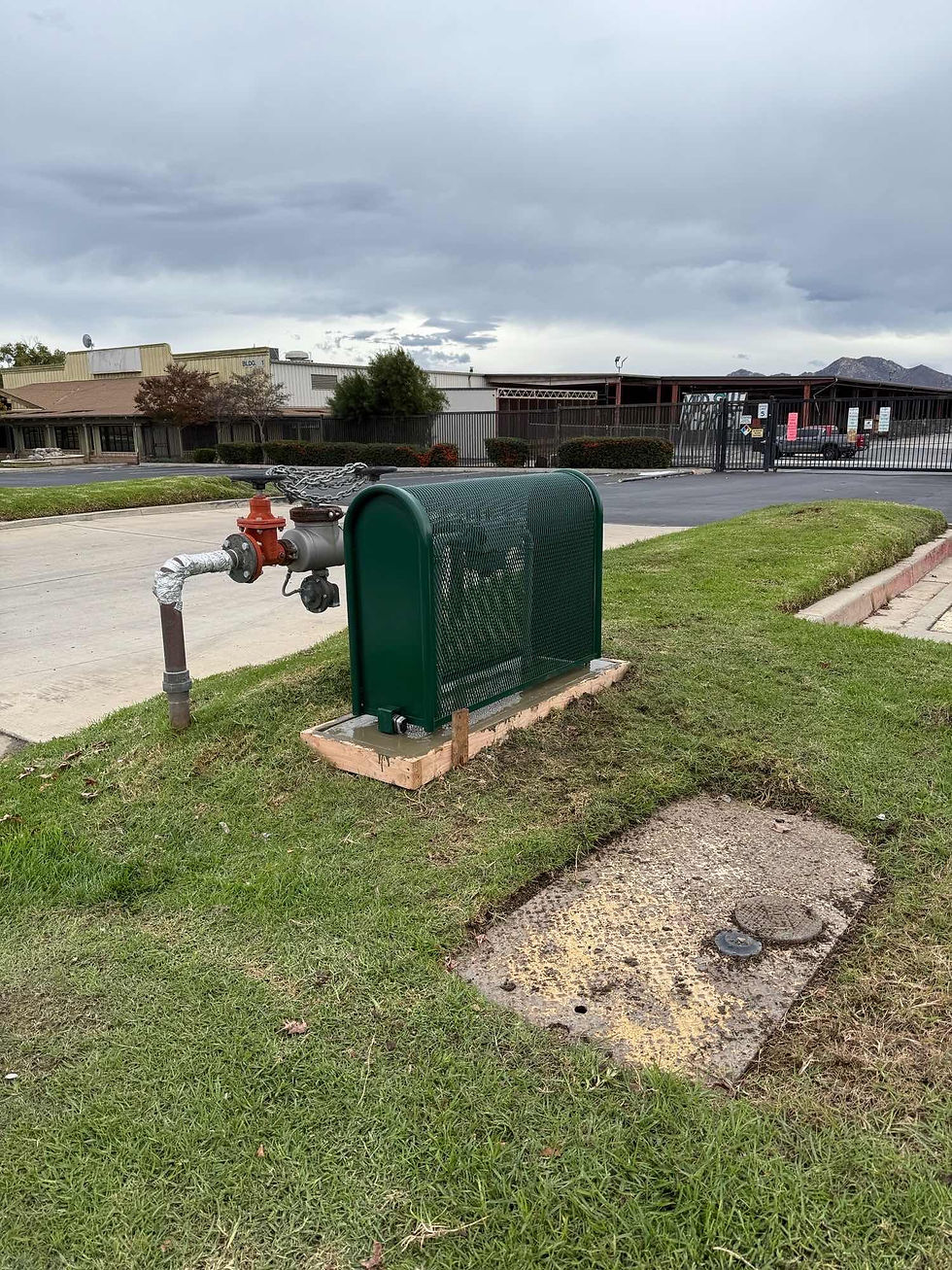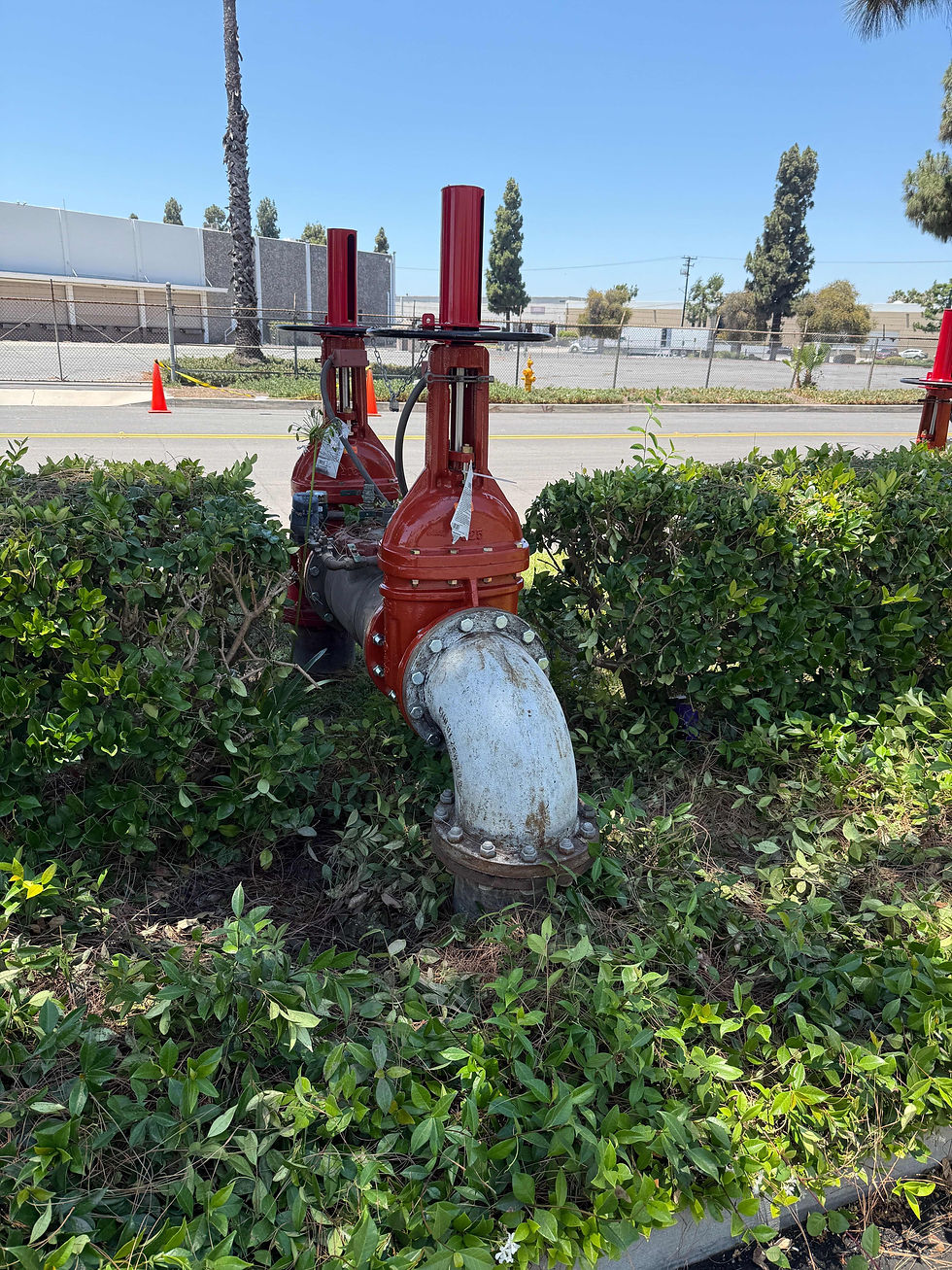Can a Backflow Preventer Cause Low Water Pressure in My Building?
- bill57931
- Oct 17
- 5 min read

A backflow preventer can contribute to low water pressure, especially if it’s undersized, clogged, misapplied, or overdue for service. Every backflow device introduces some pressure loss by design.
When parts wear out or debris builds up, that normal pressure loss can become significant—showing up as weak showers, slow-filling fixtures, or poor irrigation performance.
At Atlas Backflow Services, we’ve helped hundreds of Orange County property owners restore strong, reliable water pressure. Below, we explain why it happens, how to diagnose it, and the maintenance steps our backflow maintenance Orange County experts recommend to keep your system flowing and compliant.
Why Backflow Preventers Affect Pressure
Backflow preventers (such as DCVAs and RPZs) stop contaminated water from reversing into the public supply. To do that, they rely on internal check valves and springs that create an intentional restriction to flow.
Normal pressure drop: A clean, properly sized device will still drop pressure—often around 3–12 psi for a DCVA and 10–20+ psi under higher flow for an RPZ.
Type matters: RPZs typically have more pressure loss than DCVAs. If your building needs high flow (multi-story domestic, irrigation, restaurants), device selection and sizing are critical.
Wear and debris: Mineral scale, sand, rust flakes after a main break, or worn check seats can increase pressure loss beyond normal.
When those factors stack up, occupants notice low pressure, especially at peak demand.
Common Causes of Low Water Pressure Linked to Backflow Devices
Undersized device: If the assembly isn’t sized to your peak demand (gpm), it will choke flow. This is a common issue after renovations or tenant changes.
Clogged inlet strainer or fouled checks: Debris collects on strainers and seats, increasing resistance. After utility work or a water-main event, clogging can be sudden.
Worn internal parts: Aging springs, O-rings, and check discs cause higher differential pressure across the device.
Partially closed isolation valves: Upstream or downstream shutoff valves may not be fully open after service.
Relief valve discharge on RPZs: If an RPZ is weeping or dumping, your effective pressure and flow can drop.
PRV conflicts: A building pressure-reducing valve (PRV) that’s misadjusted or failing, combined with a backflow device, can result in compounding pressure loss.
Thermal expansion issues: In closed systems, expansion fluctuations can trigger backflow components to behave erratically, impacting perceived pressure.
Quick Diagnostics Our Orange County Pros Use
Here’s a simple, building-friendly process our backflow maintenance Orange County experts recommend before you replace fixtures or call the utility:
Check static pressure: Use a gauge on an exterior hose bib. Healthy municipal static in most OC areas is often 60–80 psi. If static is low everywhere, it may be a supply issue.
Compare static vs. dynamic: Open a large fixture (tub, commercial sink) and watch pressure under flow. A big drop suggests a restriction—often the backflow device, PRV, or a partially closed valve.
Inspect isolation valves: Confirm the upstream and downstream backflow shutoffs are fully open. Even 10–15° off full open can matter.
Look for strainer access: Many devices have an inlet strainer. If debris is suspected, a licensed tester can isolate, depressurize, and clean it.
Check RPZ relief: Any steady discharge indicates internal issues that can impact pressure and must be addressed immediately.
Review device type and size: Match your fixture units and peak gpm to the device’s flow curves. Our team can run the numbers and recommend right-sizing if needed.
Assess the PRV: If your building has a PRV, verify setpoint (commonly 50–65 psi downstream). A failing PRV mimics low-pressure symptoms, especially during peak flow.
Important: Do not bypass or remove a backflow preventer. It’s a critical safety device, and bypassing is unsafe and typically illegal.
When It’s Not the Backflow Preventer
Low pressure can stem from other culprits:
Clogged aerators and showerheads: Mineral buildup restricts flow at the fixture.
A failing PRV: Sticks closed under flow or over-reduces pressure.
Hidden leaks: Slab or irrigation leaks reduce available pressure and flow.
Municipal fluctuations: Temporary drops during peak neighborhood demand or after main work.
Water heater or tankless scale: Restricts hot-side flow, often mistaken for “low pressure.”
Our backflow maintenance Orange County experts recommend ruling out these easy wins in tandem with backflow testing to avoid guesswork.
Maintenance That Protects Pressure (and Compliance)
Consistent upkeep keeps your assembly safe and low-resistance:
Annual testing (minimum): Required by most Orange County water districts to certify performance and safety.
Strainer cleaning: After main breaks or construction nearby—and at least annually in high-debris areas.
Overhaul kits: Replace checks, springs, and seals every 3–5 years, or sooner in harsh conditions.
Right-size reviews: After tenant improvements, landscape expansions, or added stories/fixtures, verify the device still matches demand.
PRV tune-ups: Rebuild or replace PRVs on a similar cycle so they work harmoniously with your backflow assembly.
This is exactly the proactive approach our backflow maintenance Orange County experts recommend to minimize pressure issues year-round.
How Atlas Backflow Services Helps
Atlas Backflow Services specializes in keeping Orange County buildings safe, compliant, and flowing strong.
Certified testing and reports: We test, document differentials, and submit compliance records to your water purveyor.
Same-day troubleshooting: If pressure is urgent, we can isolate causes quickly—device, PRV, valves, or municipal.
Clean, repair, or replace: From strainer cleanouts and internal rebuilds to device right-sizing (DCVA vs. RPZ), we do it all.
Code and purveyor expertise: We know the local district rules and timelines so you avoid fines and shutoffs.
Clear estimates and options: We’ll show you the pressure drop we measure across the device and provide the most cost-effective fix.
If you’re experiencing low water pressure, our backflow maintenance Orange County experts recommend starting with a certified test and flow assessment. In many cases, a simple service restores pressure the same day.
FAQ: Backflow Devices and Low Pressure
How much pressure drop is normal through a backflow preventer?
For a clean, properly sized DCVA: roughly 3–12 psi at typical flows. For an RPZ: 10–20+ psi under higher demand. Exact numbers depend on model and gpm.
Can I bypass the backflow preventer to see if pressure improves?
No. Bypassing is unsafe and usually illegal. A certified tester can measure differential pressure across the device to confirm whether it’s the culprit—without violating code.
Will a bigger backflow preventer fix low pressure?
Sometimes. Right-sizing to your peak flow is crucial, but we also consider PRVs, service line diameter, and fixture demand to avoid oversizing or unnecessary costs.
How long does a test take?
Typically 20–40 minutes for most commercial and residential devices, longer if repairs or cleaning are needed.
The Bottom Line
A backflow preventer can absolutely cause or worsen low water pressure—especially if it’s undersized, clogged, or worn. The fastest path to a solution is measuring actual pressure loss across the device and servicing as needed.
That’s the proven, no-guesswork approach our backflow maintenance Orange County experts recommend.Ready to restore strong, reliable pressure and stay compliant? Contact Atlas Backflow Services today for certified testing, maintenance, and right-sizing across Orange County. We’re here to protect your water, your building, and your bottom line.







Comments